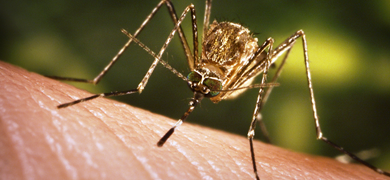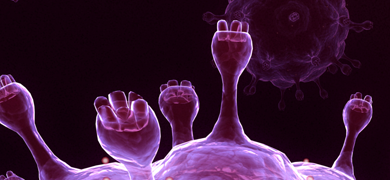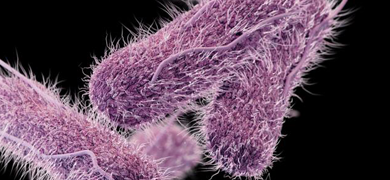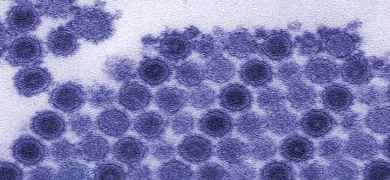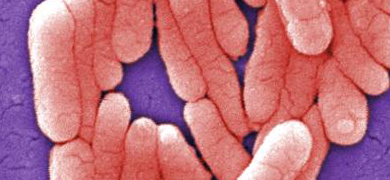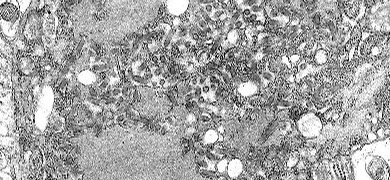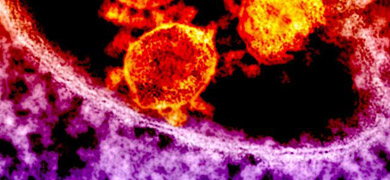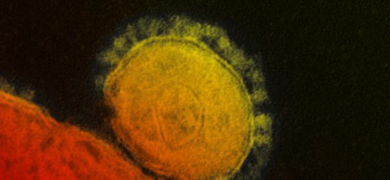
For thousands of years, pathogens originating from animal reservoirs have been responsible for numerous outbreaks among humans. These diseases, known as zoonotic diseases or zoonoses, are estimated to make up more than 60% of known infectious diseases. Within the last century, we have seen an alarming number of new zoonoses emerge that have resulted in globally devastating outbreaks such as Ebola, severe acute respiratory syndrome, avian influenza, Middle East respiratory syndrome, Zika fever, and the ongoing COVID-19 pandemic. These and other zoonotic diseases have had a disastrous impact on public health and the economy, resulting in high morbidity and mortality rates in human and animal populations; strain on healthcare resources and high medical costs; disruptions in trade, transportation, and manufacturing; unemployment; and labor shortages.
The frequency of zoonotic disease transmission has been increasing over time—it is believed that as many as 3 out of every 4 new diseases in humans come from an animal source. It is therefore inevitable that we will continue to see emerging and re-emerging zoonotic diseases in the future. At ATCC, it is our mission to support global health by providing researchers with the resources needed to prevent, detect, and respond to infectious disease outbreaks. As in our response to the COVID-19 pandemic, we will partner with the global research community to acquire, authenticate, maintain, and distribute the clinically relevant pathogens needed to respond to emerging zoonotic diseases.
Resources for zoonotic diseases of concern in the United States
Emerging coronaviruses
Explore our growing collection of genomic and synthetic RNA, heat-inactivated materials, and antibodies that support coronavirus research.
Plague
ATCC provides authenticated genomic DNA prepared from a variety of Yersinia pestis strains to support your research.
Salmonellosis
Our extensive portfolio includes both species of Salmonella, the six S. enterica subspecies, and over 100 different serovars.
Zika
Our portfolio includes in vivo and cell culture–adapted strains, genomic and synthetic RNA, heat-inactivated and high-titer preparations, and host cells.
Lyme disease
Support your Lyme Disease research with fully authenticated Borrelia burgdorferi strains and genomic DNA from ATCC.
Rabies
We offer both in vivo and cell culture–adapted Rabies virus strains to support your essential research.
West Nile virus
Support your West Nile virus research with authenticated strains and cell lines from ATCC. We also offer synthetic RNA, which can be used in a BSL-1 facility!
Zoonotic influenza
Explore our collection of animal-derived Influenza strains and related genomic RNA and monoclonal antibodies.

How are zoonotic pathogens transmitted from animals to humans?
Zoonotic pathogens are able to spread to humans through any circumstances involving contact with or consumption of animals or animal products. These transmission pathways can be affected by a variety of drivers such as international travel, changes in the agricultural and food industries, urbanization and destruction of natural habitats, or climate change.
- Direct contact – Coming into contact with the bodily fluids (eg, saliva, blood, urine, feces, mucous, respiratory aerosols) from an infected animal. Examples include animal scratches or bites and the handling of domestic and agricultural animals.
- Indirect contact – Coming into contact with inanimate objects or surfaces that have been contaminated. Examples include bedding, brushes, obstetrical equipment, food and water dishes, and barns.
- Vector-borne – Being bitten by a hematophagous arthropod (eg, mosquitoes, fleas, ticks) that previously acquired a pathogen from an infected animal.
- Ingestion – Consuming contaminated food or water. This can occur if animal products such as meat or milk are not cooked or pasteurized properly before consumption or if raw fruits and vegetables are contaminated with fecal matter.
Learning from Zika: Preparing for the Next Outbreak
Featured products
Zoonotic disease research materials
Refine by
Salmonella enterica subsp. enterica (ex Kauffmann and Edwards) Le Minor and Popoff serovar Typhimurium
29630
BSL 2
| |||||||
- Product format:
- Freeze-dried
- Strain designation:
- TA 1537
- Deposited as:
- Salmonella typhimurium (Loeffler) Castellani and Chalmers
- Type strain:
- No
Salmonella enterica subsp. enterica (ex Kauffmann and Edwards) Le Minor and Popoff serovar Typhi
39926
BSL 2
| |||||||
- Product format:
- Freeze-dried
- Strain designation:
- 531Ty
- Deposited as:
- Salmonella typhi (Schroeter) Warren and Scott
- Type strain:
- No
Salmonella enterica subsp. enterica (ex Kauffmann and Edwards) Le Minor and Popoff serovar Typhimurium
39183
BSL 2
| |||||||
- Product format:
- Freeze-dried
- Strain designation:
- SL1479
- Deposited as:
- Salmonella typhimurium (Loeffler) Castellani and Chalmers
- Type strain:
- No
Salmonella enterica subsp. enterica (ex Kauffmann and Edwards) Le Minor and Popoff serovar Dublin
39184
BSL 2
| |||||||
- Product format:
- Freeze-dried
- Strain designation:
- SL1438
- Deposited as:
- Salmonella dublin Kauffmann
- Type strain:
- No
Listeria monocytogenes (Murray et al.) Pirie
BAA-3135
BSL 2
| |||||||
- Product format:
- Frozen
- Strain designation:
- CFSAN034257
- Deposited as:
- Listeria monocytogenes
- Type strain:
- No
Usutu virus
VR-1941
BSL 2
- Product format:
- Frozen
- Strain designation:
- UG09615
- Classification:
- Flaviviridae, Flavivirus
Salmonella enterica subsp. enterica (ex Kauffmann and Edwards) Le Minor and Popoff serovar Typhimurium
35988
BSL 2
- Product format:
- Freeze-dried
- Strain designation:
- SL3790 [CGSC 256, SGSC 256]
- Deposited as:
- Salmonella typhimurium (Loeffler) Castellani and Chalmers
- Type strain:
- No
Salmonella enterica subsp. enterica (ex Kauffmann and Edwards) Le Minor and Popoff serovar Typhimurium
35987
BSL 2
| |||||||
- Product format:
- Frozen
- Strain designation:
- SA2380
- Deposited as:
- Salmonella typhimurium (Loeffler) Castellani and Chalmers
- Type strain:
- No
Salmonella enterica subsp. enterica (ex Kauffmann and Edwards) Le Minor and Popoff serovar Typhimurium
35986
BSL 2
| |||||||
- Product format:
- Freeze-dried
- Strain designation:
- SA2381
- Deposited as:
- Salmonella typhimurium (Loeffler) Castellani and Chalmers
- Type strain:
- No
Salmonella enterica subsp. enterica (ex Kauffmann and Edwards) Le Minor and Popoff serovar Agona
51957
BSL 2
| |||||||
- Product format:
- Freeze-dried
- Strain designation:
- CDC 873 [CDC 1111-61]
- Deposited as:
- Salmonella choleraesuis subsp. choleraesuis (Smith) Weldin serovar Agona
- Type strain:
- No
Salmonella enterica subsp. enterica (ex Kauffmann and Edwards) Le Minor and Popoff serovar Paratyphi A
9150
BSL 2
| |||||||
- Product format:
- Freeze-dried
- Deposited as:
- Salmonella paratyphi-A (Brion and Kayser) Castellani and Chalmers
- Type strain:
- No
Salmonella enterica
35664
BSL 2
| |||||||
- Strain designation:
- LRA 03 05 73
- Deposited as:
- Salmonella sp.
- Type strain:
- No
Salmonella enterica subsp. enterica (ex Kauffmann and Edwards) Le Minor and Popoff serovar Saphra
35641
BSL 2
| |||||||
- Product format:
- Freeze-dried
- Deposited as:
- Salmonella sp.
- Type strain:
- No
Salmonella enterica subsp. enterica (ex Kauffmann and Edwards) Le Minor and Popoff serovar Abaetetuba
35640
BSL 2
| |||||||
- Product format:
- Freeze-dried
- Deposited as:
- Salmonella sp.
- Type strain:
- No
Borrelia burgdorferi Johnson et al. emend. Baranton et al.
35211
BSL 2
| |||||||
- Product format:
- Frozen
- Strain designation:
- IRS
- Deposited as:
- Borrelia burgdorferi Johnson et al. emend. Baranton et al.
- Type strain:
- No
Listeria monocytogenes (Murray et al.) Pirie
35152
BSL 2
| |||||||
- Product format:
- Freeze-dried
- Strain designation:
- NCTC 7973
- Deposited as:
- Listeria monocytogenes (Murray et al.) Pirie
- Type strain:
- No
Borrelia burgdorferi Johnson et al. emend. Baranton et al.
35210
BSL 2
| |||||||
- Product format:
- Frozen
- Strain designation:
- B31
- Deposited as:
- Borrelia burgdorferi Johnson et al. emend. Baranton et al.
- Type strain:
- Yes
Genomic DNA from Borrelia burgdorferi strain B31
35210D-5
BSL 1
| |||||||
- Product format:
- Dried
- Derived from:
- Borrelia burgdorferi B31 (ATCC 35210)
Quantitative Genomic DNA from Borrelia burgdorferi strain B31
35210DQ
BSL 1
| |||||||
- Product format:
- Frozen
- Derived from:
- Borrelia burgdorferi B31 (ATCC 35210)
Zika virus, High titer
VR-1838PQ
BSL 2
| |||||||
- Product format:
- Frozen
- Strain designation:
- MR 766
- Classification:
- Flaviviridae, Flavivirus
Zika virus, High titer
VR-1843PQ
BSL 2
| |||||||
- Product format:
- Frozen
- Strain designation:
- PRVABC59
- Classification:
- Flaviviridae, Flavivirus
Dengue virus type 3
VR-3380
BSL 2
| |||||||
- Product format:
- Frozen
- Strain designation:
- H87
- Classification:
- Flaviviridae, Flavivirus
Salmonella enterica subsp. arizonae (Borman) Le Minor et al.
33952
BSL 2
| |||||||
- Product format:
- Freeze-dried
- Strain designation:
- 810-003
- Deposited as:
- Arizona sp.
- Type strain:
- No
Salmonella enterica subsp. enterica (ex Kauffmann and Edwards) Le Minor and Popoff serovar Typhi
33458
BSL 2
| |||||||
- Product format:
- Freeze-dried
- Strain designation:
- CDC 2862-79 [H901]
- Deposited as:
- Salmonella typhi (Schroeter) Warren and Scott
- Type strain:
- No
